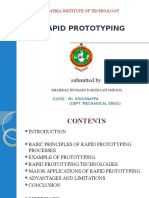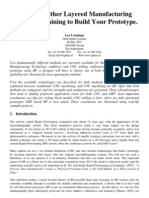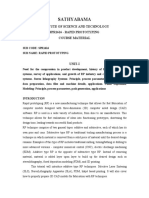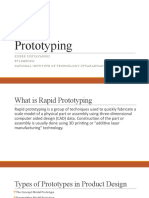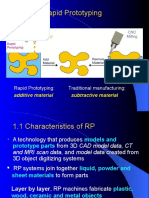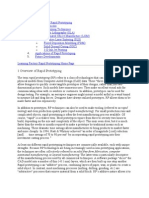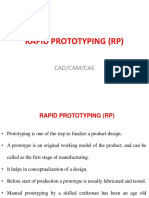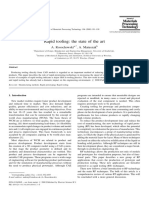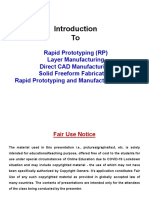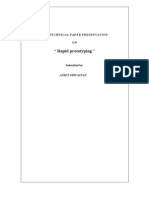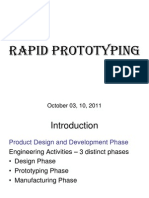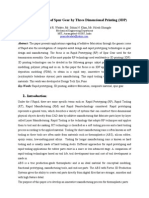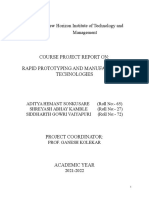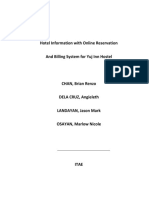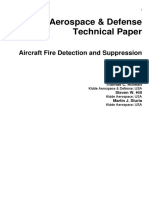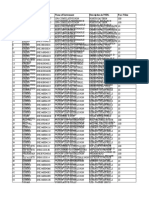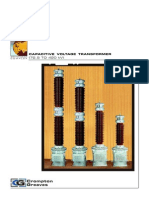Dr.
Mahalingam College of Engineering and Technology Pollachi-642003 Department of Mechanical Engineering
Rapid Prototyping Rapid Prototyping (RP) can be defined as a group of techniques used to quickly fabricate a scale model of a part or assembly using three-dimensional computer aided design (CAD) data. What is commonly considered to be the first RP technique, Stereo lithography, was developed by 3D Systems of Valencia, CA, USA. The company was founded in 1986, and since then, a number of different RP techniques have become available. Rapid Prototyping has also been referred to as solid free-form manufacturing; computer automated manufacturing, and layered manufacturing. RP has obvious use as a vehicle for visualization. In addition, RP models can be used for testing, such as when an airfoil shape is put into a wind tunnel. RP models can be used to create male models for tooling, such as silicone rubber molds and investment casts. In some cases, the RP part can be the final part, but typically the RP material is not strong or accurate enough. When the RP material is suitable, highly convoluted shapes (including parts nested within parts) can be produced because of the nature of RP. The reasons of Rapid Prototyping are 1. To increase effective communication. 2. To decrease development time. 3. To decrease costly mistakes. 4. To minimize sustaining engineering changes. 5. To extend product lifetime by adding necessary features and eliminating redundant features early in the design. Rapid Prototyping decreases development time by allowing corrections to a product to be made early in the process. By giving engineering, manufacturing, marketing, and purchasing a look at the product early in the design process, mistakes can be corrected and changes can be made while they are still inexpensive. The trends in manufacturing industries continue to emphasize the following: 1. Increasing number of variants of products. 2. Increasing product complexity. 3. Decreasing product lifetime before obsolescence 4. Decreasing delivery time. Rapid Prototyping improves product development by enabling better communication in a concurrent engineering environment C.Selva Senthil Prabhu and M.Giridharadayalan AP Mech Page 1
�Dr.Mahalingam College of Engineering and Technology Pollachi-642003 Department of Mechanical Engineering
The basic methodology for all current rapid prototyping techniques can be summarized as follows: 1. A CAD model is constructed, then converted to STL format. The resolution can be set to minimize stair stepping 2. The RP machine processes the .STL file by creating sliced layers of the model. 3. The first layer of the physical model is created. The model is then lowered by the thickness of the next layer, and the process is repeated until completion of the model. 4. The model and any supports are removed. The surface of the model is then finished and cleaned. Rapid Tooling The term Rapid Tooling (RT) is typically used to describe a process which either uses a Rapid Prototyping (RP) model as a pattern to create a mold quickly or uses the Rapid Prototyping process directly to fabricate a tool for a limited volume of prototypes. RT is distinguished from conventional tooling in that: a. Tooling time is much shorter than for a conventional tool. Typically, time to first articles is below one-fifth that of conventional tooling. b. Tooling cost is much less than for a conventional tool. Cost can be below five percent of conventional tooling cost. c. Tool life is considerably less than for a conventional tool. d. Tolerances are wider than for a conventional tool. In addition to Silicone (SRM), we present Composite Molding and Direct AIM (ACES Injection Molding). The field of RT is expanding rapidly and information on many of the new methodologies is still changing. Selective Laser Sintering Selective Laser Sintering (SLS , registered trademark by DTM of Austin, Texas, USA) is a process that was patented in 1989 by Carl Deckard, a University of Texas graduate student. Its chief advantages over Stereo lithography (SLA) revolve around material properties. Many varying materials are possible and these materials can approximate the properties of thermoplastics such as polycarbonate, nylon, or glass-filled nylon. As the figure below shows, an SLS machine consists of two powder magazines on either side of the work area. The leveling roller moves powder over from one magazine, crossing over the work area to the other magazine. The laser then traces out the layer. The work platform moves down by the thickness C.Selva Senthil Prabhu and M.Giridharadayalan AP Mech Page 2
�Dr.Mahalingam College of Engineering and Technology Pollachi-642003 Department of Mechanical Engineering
of one layer and the roller then moves in the opposite direction. The process repeats until the part is complete
Fused Deposition Modeling Stratasys of Eden Prairie, MN makes Fused Deposition Modeling (FDM) machines. The FDM process was developed by Scott Crump in 1988. The fundamental process involves heating a filament of thermoplastic polymer and squeezing it out like toothpaste from a tube to form the RP layers. The machines range from fast concept modelers to slower, high-precision machines. The materials include polyester, ABS, elastomers, and investment casting wax. The overall arrangement is illustrated below:
CNC machining as an RP technology The application of CNC milling as an RP technology still is new, and has been made possible by a number of new developments. As these are not yet so well known, we will briefly C.Selva Senthil Prabhu and M.Giridharadayalan AP Mech Page 3
�Dr.Mahalingam College of Engineering and Technology Pollachi-642003 Department of Mechanical Engineering
describe some developments in CNC machining that have made it a competitive technology for RP.The basics of machining are very straightforward: cutting off small chips. Traditionally the cutting tool was moved by manual control (rotating a wheel), after World War II new developments made Numerical Control (punched tape) possible, and now for many years CNC (Computerized Numerical Control) has become mature a technology. CNC milling has been used for prototype building in the past: involving large, heavy and expensive machines, powerful, though very complicated, CAM software, and skilled CAM operators. Surely not an automatic process, so not to be called Rapid Prototyping.
Examples of low-cost 3D CNC milling machines, perfectly suited for RP applications. (Sources Delft Spline Systems - left, and Minitech - right).
Since that time things have changed: both on the hardware side and on the software side. New hardware developments resulted in small, light and very inexpensive CNC milling machines. Nowadays prices for a 3D CNC milling machine even start below USD 1,000 ! Such a machine (obviously with very limited capabilities) is within the reach of any product designer. Many manufacturers now offer a large variety of light CNC machines, including a fit for almost any application (figure 2). The heavier industrial machines can of course also be used for RP purposes, offering advantages such as larger size, speed, stability, power, etc. You can find machine prices ranging between USD 1,000 and 1,000,000 - for any specific application a fit can be found. A second important development in machining hardware is High Speed (HS) milling. Here the advantage is not in price but in speed. Using a very high spindle speed being ca 40,000 to 80,000 rounds per minute (rpm), the cutter can move much faster than on traditional C.Selva Senthil Prabhu and M.Giridharadayalan AP Mech Page 4
�Dr.Mahalingam College of Engineering and Technology Pollachi-642003 Department of Mechanical Engineering
machines (which run at ca 1,000 to 10,000 rpm). Advantages are that the cutting forces remain small, cooling is not needed as the chips take away the heat and vibrations can be minimized. For HS milling both machine and controller need to be specifically designed, making it possible to maintain a high federate while processing large numbers of movement commands (a 'lookahead' capability is needed) [Gunnink, 1998]. On the software side new developments have resulted in a new type of CAM software, specifically aimed at the application of Rapid Prototyping. This in contrast to 'traditional' CAMsoftware which is aimed at Mould-makers, needing a high-end solution for perfect results. This traditional type of CAM-software needs a trained CAM-specialist, who can correctly interpret and set the many parameters. He must also be able to check the resulting tool paths, as errors are possible that must be prevented by changing the parameter settings. The new software is aimed at product designers, who do not know much about machining and do not want to be bothered with such know-how either. CAM software for RP should work like a 'black-box', making the prototype creation process as automatic as possible. This does solve the problem signaled in [Wall, 1992]: at that moment the time needed to generate the CNC tool paths was too long for real RP. Obviously in this new software the number of parameters is limited (figure 3): the software is not meant to compete with the numerous outstanding high-end CAM packages currently available. Other important characteristics of CAM software for RP are: 1. The capability to import STL files: the standard file type for RP, offering a much more stable geometry transfer than IGES. 2. The high speed of calculating the tool paths: RP has to be Rapid. 3. The low price: especially important for Concept Modellers. Do note that large price differences can be seen for CAM software as well: prices range between ca USD 1,000 and 50,000) Obviously the easy-to-use and low-cost CAM software for RP has a number of limitations when compared to the 'high-end' CAM software for mold makers. Differences in CAM software capabilities can be found in the following areas: Tooling strategies. In the case of parallel tool paths the distance between the tool paths limits the achieved accuracy. If combined with, for instance, waterline machining the exact C.Selva Senthil Prabhu and M.Giridharadayalan AP Mech Page 5
�Dr.Mahalingam College of Engineering and Technology Pollachi-642003 Department of Mechanical Engineering
geometry can be machined (within the tolerances to be set for cusp height and chordal deviation). High-end CAM software may also offer options like detection and removal of rest material at sharp inner corners, optimizes start- and end-procedures for operations, and the use of machining features. Support of 2.5 D machining, which creates a model by combining a number of 2D contours, each at a constant Z-level. Options like drilling holes on certain positions belong to this category as well. This way of machining is very standard for mechanical applications. Number of axes supported. The basic CNC machine uses 3 controlled axes: X, Y and Z. More elaborate machines may be equipped with a fourth axis (type 'barbecue' or rotation table), or with axes where the tool can be rotated to approach the geometry from different directions. Capability to optimize the tool paths for HS milling, by removing all angles (all subsequent movements connected at a continuous tangent). Combining these new developments of a light CNC milling machine and an easy-to use CAM software package results in a Rapid Prototyping system that offers a number of special characteristics, and as we will show, supplements the LMT based RP systems.
C.Selva Senthil Prabhu and M.Giridharadayalan AP Mech
Page 6

